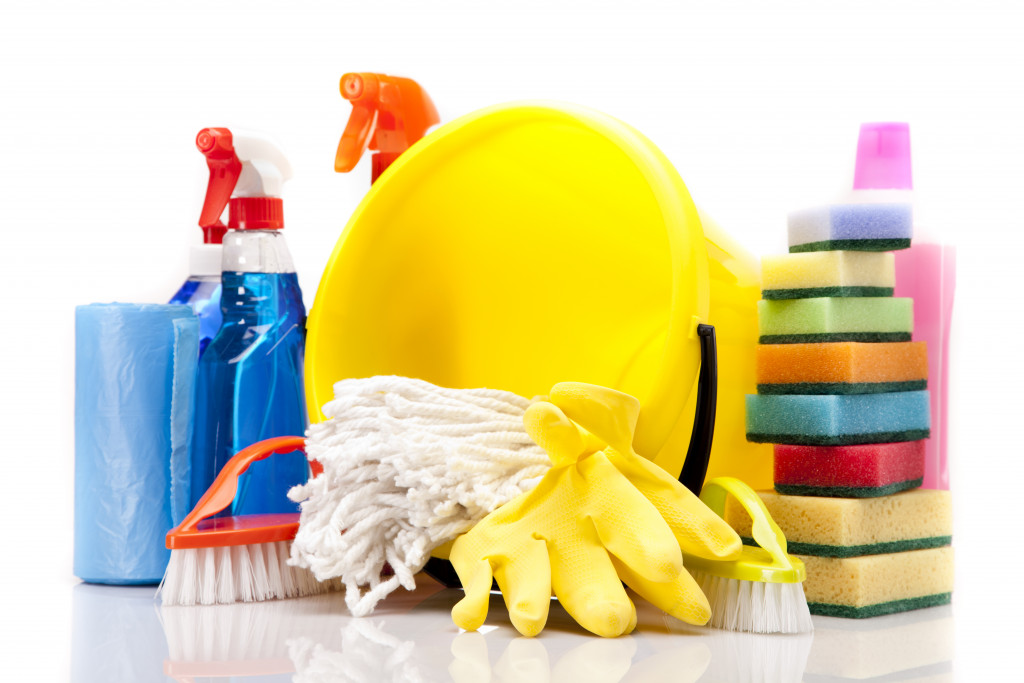Warehouse flooring is one of the most important aspects of a warehouse. It must withstand heavy machinery’s weight and the constant movement of products and workers. To keep your warehouse flooring in good condition, it is important to take steps to protect it from damage. This guide will teach you how to protect your warehouse flooring from common hazards.
Use the Right Flooring Material
The type of flooring material you choose for your warehouse can have a big impact on the overall look and feel of the space, as well as the safety of your employees. When it comes to warehouse flooring, there are a few things you need to keep in mind to make the best decision for your business.
First and foremost, you need to consider the type of activity that will be taking place in the warehouse. If you are storing heavy equipment or frequently moving boxes around, you will need a material that can withstand a lot of wear and tear. Additionally, you need to think quickly about how easy the flooring material will be to clean.
A busy warehouse can get messy quickly, so you’ll want to choose a material that can be easily swept and mopped. Finally, you should also consider the overall cost of the flooring material. Some materials, like concrete, are very durable but can be quite expensive.
Use Protective Coverings
Flooring in a warehouse must be protected from various sources of wear and tear. One way to do this is using the proper protective covering. For example, a light-duty floor protector can prevent scratching from chairs or other furniture.
A medium-duty floor protector can provide additional protection from foot traffic and light machinery. A heavy-duty floor protector is the best choice for areas that will see heavy traffic or be subject to spills.
Choosing the right type of cover is also essential to ensure that the covering is properly installed. Loose or wrinkled coverings can create trip hazards and make it difficult to clean the floor.
Moreover, you should also consider purchasing other floor protection accessories. For example, you can use floor protection accessories like tire socks on heavy-duty machines for lifting and shifting products. This way, you can protect your floor from any scratches or damage that can be occurred because of tires.
Use the Right Cleaning Products
Your warehouse floor is one of the most critical parts of your business. Not only does it need to be clean and presentable, but it also needs to be durable enough to withstand heavy foot traffic and the constant movement of forklifts and other equipment.

When choosing cleaning products for your warehouse floor, keeping these factors in mind is essential. First, choose a product that is specifically designed for use on concrete or another type of hard surface. Second, look for a product that will remove both dirt and stains. Third, make sure that the product you choose is safe for use around your employees and customers.
Install Floor Mats
Protect your warehouse flooring investment by installing floor mats. Floor mats capture dirt, dust, and debris before it has a chance to scratch or damage your floor. They also provide a cushioned surface that can reduce noise levels and make standing more comfortable for long periods.
In addition, floor mats can help to prevent slips and falls, making your warehouse a safer workplace. With so many benefits, it’s no wonder that floor mats are one of the most popular warehouse flooring accessories. Whether you’re looking for anti-fatigue mats, antistatic mats, or something in between, a floor mat is perfect for your needs.
Fix Any Damage Immediately
Preventative measures are always better than reactive ones, but when it comes to your warehouse floor, you can’t always anticipate every spill or drop. So, if damage does occur, it’s important to fix it immediately. Not only will this help to prevent further damage, but it will also make your warehouse more efficient and safe. Here are a few tips for fixing damage to your warehouse floor:
- If a small floor area is damaged, you can often repair it with a patch kit. These kits contain all the materials you need to fill in cracks and holes.
- If the damage is more extensive, you may need to replace the entire flooring section. This is a more involved process, but it will ensure that the damage doesn’t spread.
- In some cases, damage to the floor may indicate a bigger problem, such as a structural issue. You’ll need to contact a professional for help if this is the case.
A warehouse is busy, and the flooring must withstand a lot of wear and tear. By taking some simple precautions, you can protect your warehouse floor from damage and keep it looking its best. First, use the proper type of protective covering for the level of traffic in your warehouse. Second, fix any damage immediately to prevent further issues. And finally, choose a reputable flooring contractor to install and maintain your warehouse floor. By taking these steps, you can ensure that your warehouse floor will be safe and durable for many years.
